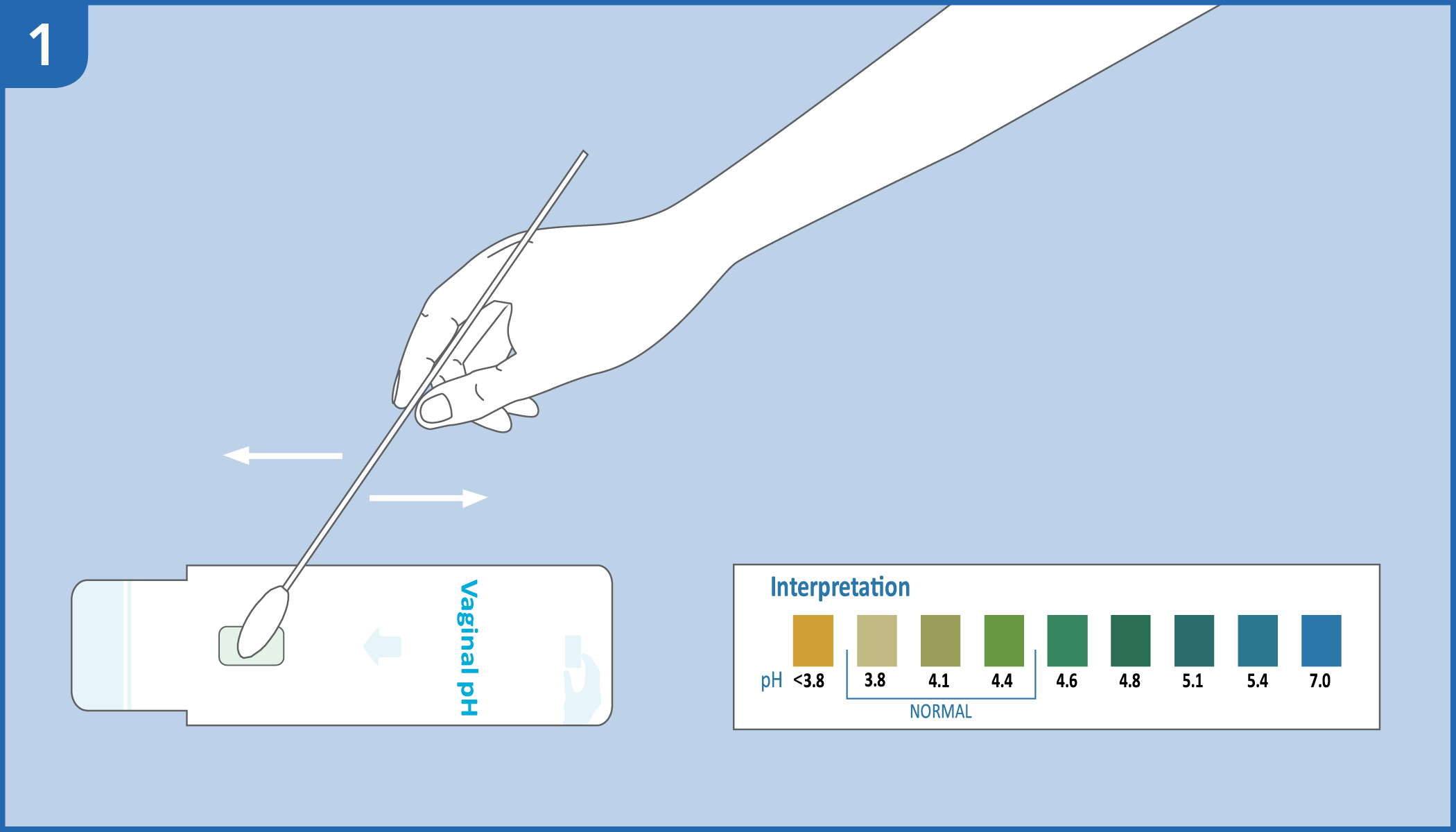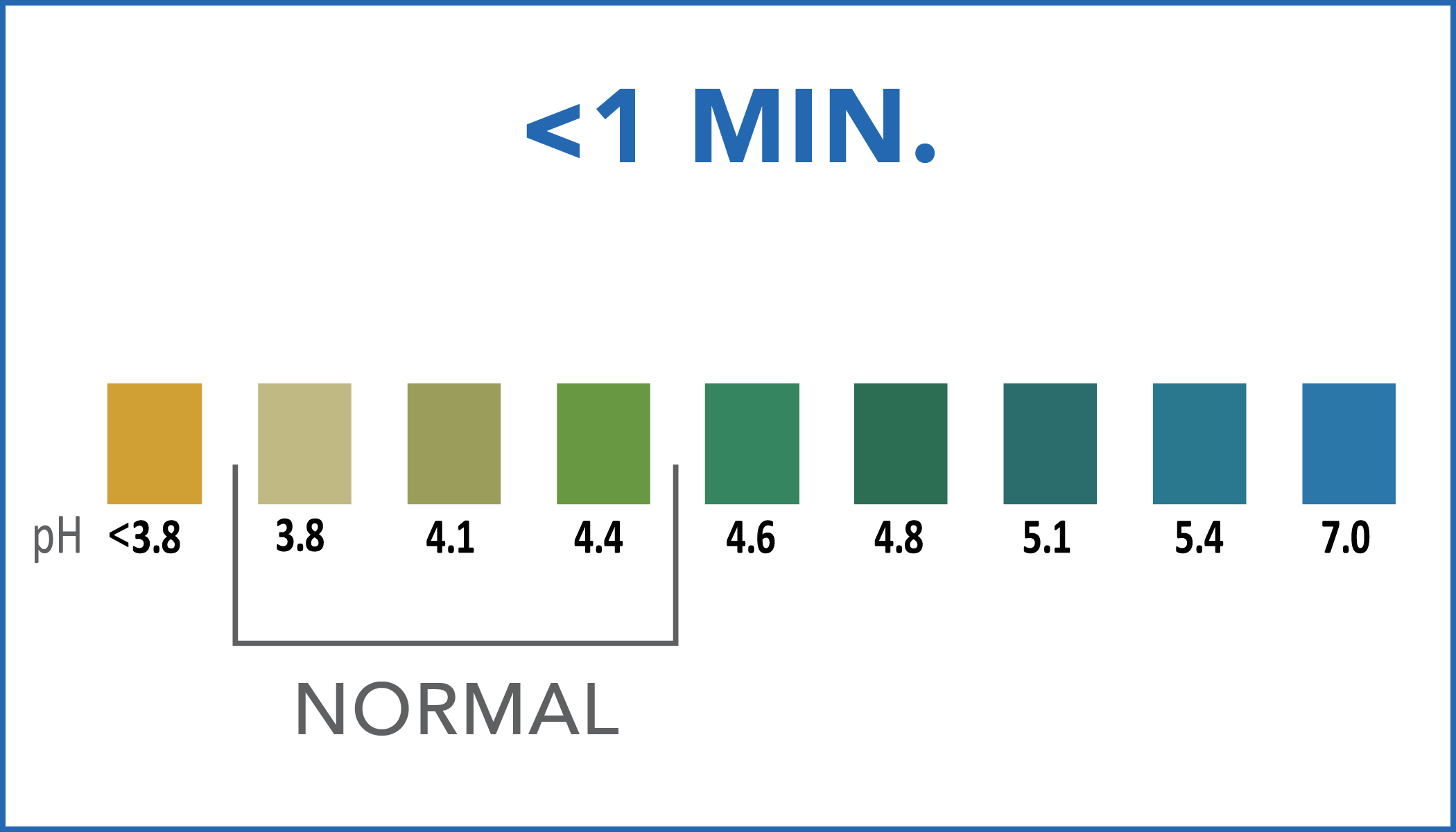


Rapid self-test for the semi-quantitative detection of pH in female vaginal swab specimens

Vaginal infections are a common problem within women of all ages. Indicating an abnormal level of vaginal mucus acidity can help assess whether vaginal symptoms are caused by an infection that requires medical attention.
read moreUnder the influence of lactobacilli, the glycogen secreted by the upper vaginal epithelium is transformed into glucose and, subsequently, into lactic acid, thus forming an acidic microenvironment inside the vagina, with a pH value between 3.8 and 4.5. The acidity of the vaginal environment is an effective protection against infection, as the vast majority of pathogenic bacteria do not survive in these conditions. Some vaginal infections, known to be associated with abnormal vaginal acidity, require professional intervention.
VAGINAL pH TEST is useful for anyone who wants to check for abnormal vaginal pH values, a symptom of one or more possible ongoing infections.
read moreVaginal infections in particular can be very risky for pregnant women, endangering both the mother and the fetus. For this reason the symptoms and results obtained with this test should always be discussed with a doctor.
VAGINAL pH TEST is a rapid device based on a chemical principle for the semi-quantitative determination of vaginal pH in samples taken by means of a vaginal swab as an aid in the diagnosis of bacterial vaginosis.
| Specificity | 99% |
| Sensitivity | 95% |
| Accuracy | 98.6% |



| Normal range | the yellow-green color obtained indicates Normal vaginal pH levels, between 3.8 and 4.5. |
| Abnormal range (pH > 4.4) | the green-blue color indicates a result not to be considered physiological. It is recommended to contact a specialist. |
| Abnormal range (pH < 3.8) | the bright yellow color indicates a result not to be considered physiological. It is recommended to contact a specialist. |
1. Pavletic, A. J., Hawes, S. E., Geske, J. A., Bringe, K., & Polack, S. H. (2004). Experience with routine vaginal pH testing in a family practice setting. Infectious Diseases in Obstetrics and Gynecology, 12(2), 63–68.
2. Huppert, J. S., Hesse, E. A., Bernard, M. C., Bates, J. R., Gaydos, C. A., & Kahn, J. A. (2012). Accuracy and Trust of Self-Testing for Bacterial Vaginosis. The Journal of Adolescent Health : Official Publication of the Society for Adolescent Medicine, 51(4), 400–405.
The test has been carried out correctly when the instructions for use are followed. It includes the reading time and the interpretation of the results shown at the "RESULTS INTERPRETATION" secrion of the instructions for use.
No, it isn’t. There are limitations to the use of the test, as some circumstances may temporarily alter the vaginal pH level: refer to the “LIMITATIONS” section of the instructions for use
Check product availability with the local representative in your country
